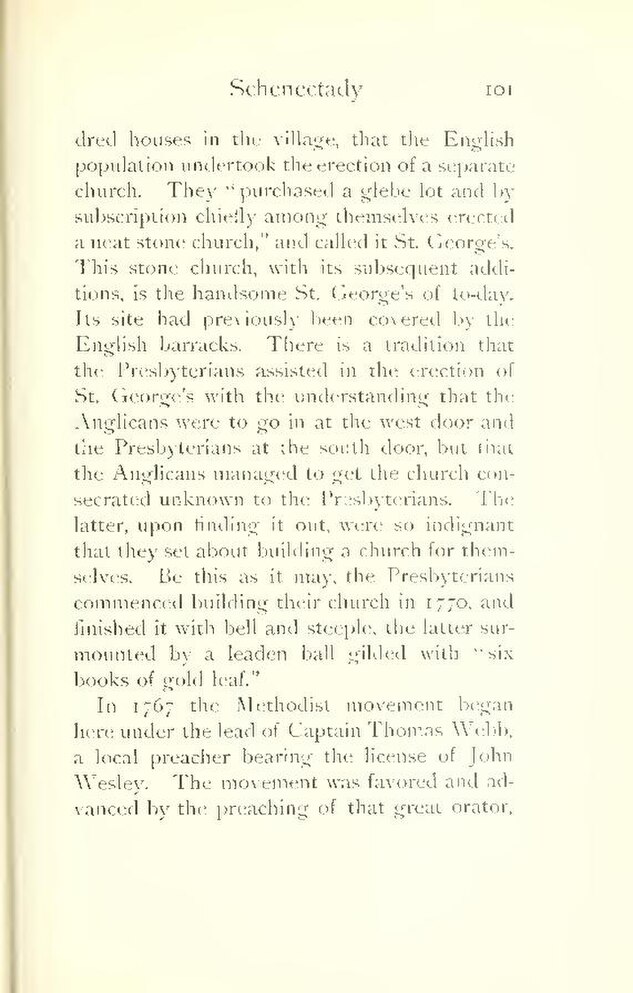- dred houses in the village, that the English
population undertook the erection of a separate church. They "purchased a glebe lot and by subscription chiefly among themselves erected a neat stone church," and called it St. George's. This stone church, with its subsequent additions, is the handsome St. George's of to-day. Its site had previously been covered by the English barracks. There is a tradition that the Presbyterians assisted in the erection of St. George's with the understanding that the Anglicans were to go in at the west door and the Presbyterians at the south door, but that the Anglicans managed to get the church consecrated unknown to the Presbyterians. The latter, upon finding it out, were so indignant that they set about building a church for themselves. Be this as it may, the Presbyterians commenced building their church in 1770, and finished it with bell and steeple, the latter surmounted by a leaden ball gilded with "six books of gold leaf."
In 1767 the Methodist movement began here under the lead of Captain Thomas Webb, a local preacher bearing the license of John Wesley. The movement was favored and advanced by the preaching of that great orator,
